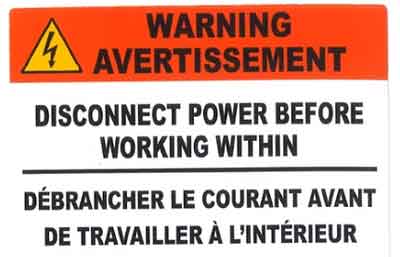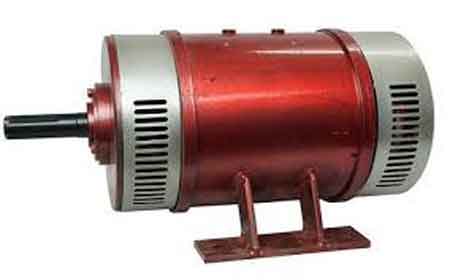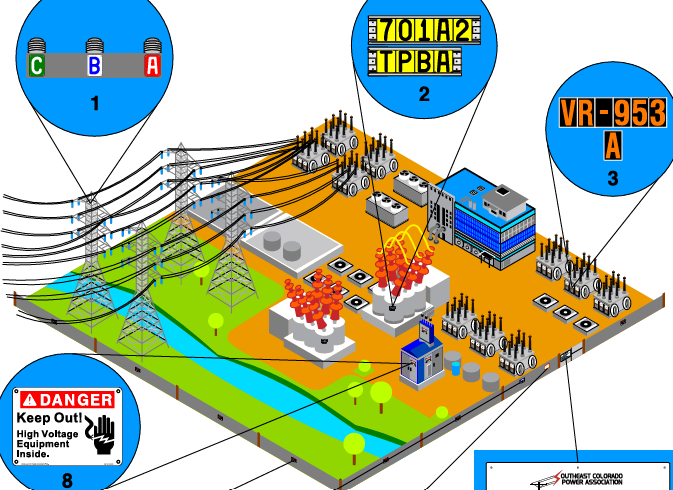warning sign disconnect power before working within

NFPA 70e Training
Our customized live online or in‑person group training can be delivered to your staff at your location.

- Live Online
- 6 hours Instructor-led
- Group Training Available
Download Our OSHA 3873 Fact Sheet – Minimum Approach Distance and Training Requirements

- Calculate MAD using voltage and overvoltage values
- Ensure proper communication between host and contract employers
- Meet OSHA training requirements for qualified electrical workers
Warning sign disconnect power before working within reminds workers to de-energize equipment before servicing. This essential electrical safety signage supports lockout tagout, prevents arc flash, and protects against shock, burns, and equipment damage.
What does Warning sign disconnect power before working within mean?
The phrase refers to a mandatory electrical safety warning used on equipment enclosures. It instructs workers to de-energize circuits before servicing, preventing arc flash, electric shock, and injuries.
✅ Promotes lockout tagout compliance
✅ Reduces electrical shock and arc flash hazards
✅ Ensures workplace safety and OSHA/NFPA 70E alignment
Request a Free Training Quotation
Electrical systems are complex and dangerous, making disconnecting power a critical step in every maintenance procedure. The warning sign disconnect power before working within ensures that workers remember to de-energize equipment, lowering the risks of electrocution, burns, and accidental start-ups.
These safety instructions are typically displayed as durable service signs on equipment enclosures. Signs should be selected based on size, material, and surface compatibility—adhering securely to metal, plastic, or painted surfaces. With proper signage, facilities can maintain compliance while protecting employees from life-threatening hazards.
Understanding what constitutes an electrically safe condition is essential when working near energized equipment: What Constitutes an Electrically Safe Condition Explained
Why must workers disconnect power before working within?
Leaving electrical components energized creates severe risks, including shock, burns, and arc flash explosions. By fully de-energizing circuits and machinery, workers eliminate contact with live parts and prevent dangerous, unintended startups. This safety measure is not optional—it is essential to both personal safety and equipment protection.
Disconnect Power Before Working Within
Certain types of equipment always require this signage to ensure safe practices:
-
Electrical panels and switchgear: High-voltage systems with fatal risks if serviced live.
-
Industrial machinery, including motors, pumps, and conveyors, must be de-energized before repair.
-
HVAC systems: Heating, ventilation, and air conditioning circuits that often run on high voltage.
-
Generators and transformers: Equipment that produces or transforms power, requiring strict safety signage.
Signs reminding workers to disconnect power before working within the act as visual safeguards that prevent complacency and reinforce safe procedures.
FREE EF Electrical Training Catalog
Download our FREE Electrical Training Catalog and explore a full range of expert-led electrical training courses.

- Live online and in-person courses available
- Real-time instruction with Q&A from industry experts
- Flexible scheduling for your convenience
Disconnect Power Before Working Within
Not all electrical systems require the same level of precaution. Still, any system connected to a significant electrical supply should have a sign warning workers to disconnect the power before working on it. The types of equipment that typically require this type of sign include:
-
Electrical panels and switchgear: These systems often manage high voltages and can cause severe injuries if worked on while live.
-
Industrial machinery: Equipment like conveyors, motors, and pumps relies on electrical circuits that should be de-energized before service.
-
HVAC systems, which encompass heating, ventilation, and air conditioning systems, frequently operate on high-voltage circuits, necessitating extra caution during maintenance.
-
Generators and transformers: Any system that involves generating or transforming electricity should have clear signage to ensure safety during servicing.
Signs indicating the need to disconnect power supplies are a critical reminder to workers that even routine inspections can be hazardous if the equipment remains energized.
Frequently Asked Questions
What Are the Legal or Regulatory Requirements for Displaying This Sign?
The Occupational Safety and Health Administration (OSHA) requires that all electrical systems be de-energized before servicing, per 29 CFR 1910.333. Lockout/tagout procedures must also be followed, and signage warning workers to disconnect power before working within is part of maintaining compliance. Failure to use proper signs can result in citations, fines, and unsafe conditions. Stay compliant with safety regulations by reviewing OSHA’s electrical work practices standard: OSHA 1910.333 | Electrical Work Practices Standard Explained.
NFPA 70E emphasizes de-energization as the first principle of electrical safety: NFPA 70E States That Equipment Should Be De-Energized Unless.
What Are the Consequences of Not Disconnecting Power Before Working Within Electrical Systems?
Failing to disconnect power places workers at risk of:
-
Arc flash incidents that release extreme heat and pressure, causing severe burns.
-
Fire hazards due to sparks and overheating.
-
Equipment damage from unintentional startups or electrical faults.
Failing to follow these procedures also exposes employers to OSHA fines, costly downtime, and liability for worker injuries.
What Safety Procedures Should Be Followed After Disconnecting Power Before Working on Equipment?
Once equipment is de-energized, additional safety steps are required:
-
Lockout/tagout: Apply locks and tags to prevent re-energization.
-
Verification: Use voltage testers to confirm the system is safe.
-
PPE: Wear insulated gloves, tools, and arc-rated clothing for added protection.
-
Communication: Notify all workers of the de-energized state.
-
Controlled re-energization: Remove lockout/tagout only when work is complete.
Learn more about proper protection levels required when dealing with energized electrical panels: Arc Flash Levels Of Protection.
The warning sign to disconnect power before working within is a cornerstone of electrical safety. It enforces critical lockout/tagout steps, protects against arc flash, and ensures compliance with OSHA and NFPA 70E. By using clear signage, following safety procedures, and maintaining compliance, workplaces can safeguard both people and equipment.
For step-by-step instructions on creating electrically safe conditions, see: Steps To Verify an Electrically Safe Work Condition Explained.
Related Articles:







